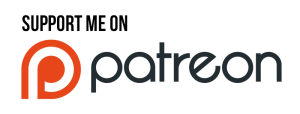User Generated vs. User Driven Content
User Generated Content
User Generated Content (UGC) is anything from wholly user-created and initiated (ex. fan art), to that content which the user creates using the tools you’ve explicitly provided for that purpose. User Generated Content features and campaigns are often seen as a compelling way to get players engaged, and when executed well can help extend the life of your product. It’s almost inevitable that with any successful game, someone will eventually pitch the idea of doing a UGC feature or social campaign. They’re a fun idea and have the potential for creating great marketing stories.
…They’re also an absurd amount of effort for often dubious ROI.
Pros:
- Fame – Creating great User Generated Content can give the player a sense of fame, particularly if you draw attention to their contribution. This is great for encourage more content from that user, and can create a great positive feedback loop.
- ‘Free’ Content – Great UGC can extend the life of your product by providing additional levels, new characters, community content, etc. By tapping into a creative community, you have the potential for more great content than you could ever achieve on your own, and from perspectives that you may never have considered.
- Exciting – User Generated Content is a great selling point, and makes for some fantastic marketing opportunities. It’s exciting, and makes for a great pitch.
Cons:
- Quality Bar – This one is a killer. When I worked on a trivia game, we allowed users to submit their own questions, for potential use in the game. Out of every 100 submitted questions, maaaaybe 2-3 were usable with some serious editing work. Most UGC is not great, and finding the hidden gems is monumental amount of effort.
- Mitigating Against Dicks – Both proverbial and literal, depending on what you’re letting players submit and through which channels. If you’re considering any sort of real-time content display of submissions, you need to thinking critically around how you handle inappropriate content or behavior. Your campaign can and will be hijacked if you don’t plan appropriately.
- Barrier for Entry – Even if you’re running a UGC campaign as a contest, you may find the number of entries disappointing. Even with a substantial prize, the barrier for entry is often too high for most of your community. Anything that requires effort outside of the scope of the game is going to cost you the majority of your entries. Set the bar too low and you’re in the opposite situation: flooded with low quality and/or troll entries.
- Time & Cost – User Generated Content campaigns are an enormous time sink and the cost quickly adds up. Even if you’ve planned it out well in advance, I guarantee it’s going to take more time and effort than you think.
- Legal – If you’re using UGC in-game or for promotional purposes, you’re absolutely going to want to make sure you’re covered from a legal standpoint. If you’re soliciting photos or video of real people, you need to be extremely careful about both minors, and using any of that footage in conjunction with your project. In short, cover your ass: talk to a lawyer first.
- Limited Payoff – Everyone thinks that UGC campaigns are going to be a HUGE hit. I have absolutely not found this to be the case. Because there are limited ‘winners’, the impact tends to be a bit of a let-down for the larger community. If you have UGC features in-game, but don’t have good filtering for quality, it can quickly become a source of active frustration for the community.
User Generated Content can be a big win. In certain circumstances it is absolutely the best solution. If you want to create a big splash and do something really unique, it’s hard to go wrong with a well executed UGC campaign. However, I strongly suggest that you plan appropriately, and keep expectations in check. They are always more work than they may seem. Always.
User Driven Content
The realm of User Driven content is a little less clearly defined than that of UGC. User Driven content is that content which has been impacted by the user(s) actions in some significant way, but was not directly created by them. This could be a response from the development team to a frequently requested feature, integrating a popular suggestion into the game, or through voting mechanisms. In short, you’re letting your players make a choice that impacts the direction of the game.
An example of this would be the Spirit Eagle Monument for Zuma Blitz. The team knew that we wanted to introduce a new Monument into the game. We’d released several previously and while the sales were good, they were met with lackluster reception from the community. So for this one we decided to let the community help drive the direction of the new Monument. We wanted a theme of speed, so we gave them three speed related animal choices: Rabbit, Snake, or Eagle. One of our talented concept artists drew up each of the animals, and we put it to a community vote. It created some fun, friendly competition around the community, and in the end the Eagle was the clear winner. The team took the community vote to heart and followed through, finalizing the design and eventually launched the Spirit Eagle Monument. The result?
Community members were much more likely to post a positive response to the Eagle. Whereas before the reception was mediocre to mostly negative, now the comments were almost entirely positive. By giving the players a choice on something that impacted the game, we gave them a better sense of ownership over that feature. Even if they didn’t get the choice they wanted (poor #TeamRabbit…), players were generally positive about the experience.
Pros:
- Less Overhead – User Driven content still requires planning and associated assets, but it’s a far cry easier than UGC campaigns.
- Master of Your Destiny – You control the quality of the end product, so you know you’ll always have a solid winner. You will not get stuck being represented by Mister Splashy Pants if you’re not wholly committed to the idea of Mister Splashy Pants.
- Broader Community Ownership – By giving your players a choice, you’ve given them partial ownership over the game itself. Having a choice, even a limited one, can make a huge difference in building a great emotional connection.
Cons:
- Limited Options – Choosing what you’re going to let your community drive is critically important. If it’s not something they care about… then they’re never going to. There’s only so much you can let your players decide, and picking the right one is challenging.
- Less Direct Ownership – Sharing the ownership across the community inevitably means it’s not as impactful on an individual level. There’s no sense of fame in being one out of a thousand that voted for a feature.
- Not as Exciting – Unless you’re letting the users make a choice that significantly impacts the course of the game, user driven initiatives are a bit of a harder sell in terms of excitement. They really boil down to ‘we let the community make a choice’. Getting people excited about that choice can be challenging, and without the personal incentives that come with UGC, you have to work a bit harder to build interest.
While not as flashy as UGC, User Driven Content deserves serious consideration when planning out your community engagement strategy. You might not build as many individual super-fans, but you have the opportunity to tap into the larger audience and create a positive emotional impact across the community. At the end of the day, your game belongs to the people who play it. Giving them the opportunity to help shape its destiny can be a great way to show your trust and appreciation.
Support My Work
I rely on the support of people like you! Dig my writing and want to see more? Support me on Patreon!
Questions? Comments? Completely disagree with my thoughts on UGC? Drop me a line in the comments or @boopsocial!







